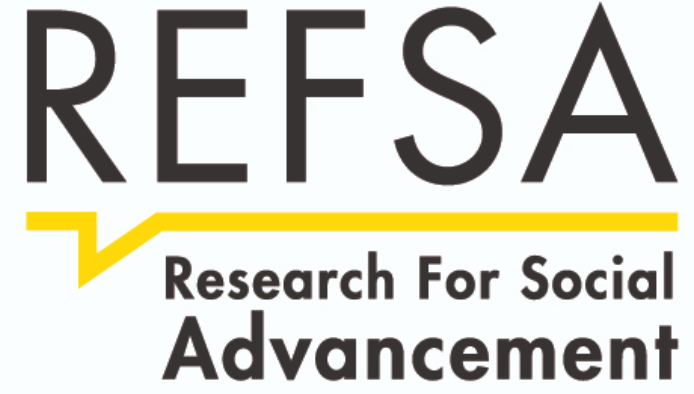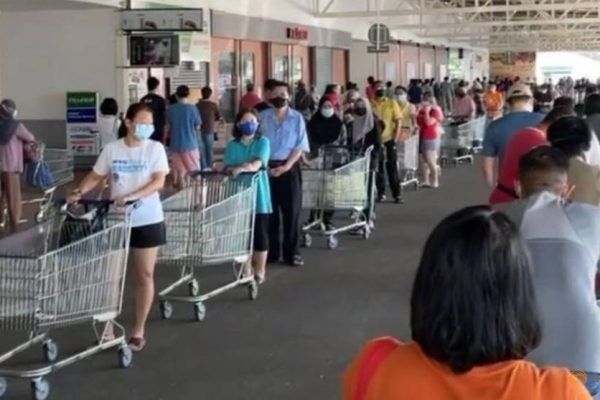Read #ProjekMuhibah Strategy 1 Report here
Media Statement by Research for Social Advancement (REFSA) Economics Team on 18 June 2021.
On June 15, 2021, Prime Minister Muhyiddin Yassin unveiled a four-phase lockdown plan outlining the intended milestones to herd immunity by the end of the year. The plan provides rough metrics and proposed dates for the gradual relaxation of restrictions. However, the announcement is only the first step in tackling the recent wave of infections. Currently Malaysia still lacks a solid strategy to effectively mitigate COVID-19 transmission. Without this, the goal of reducing daily case numbers below 500 and vaccination rates above 60% by October does not hold water.
As part of REFSA’s Projek Muhibah, which introduces 10 policies to address the socio-economic challenges caused by the pandemic, Dr. Ong Kian Ming and Frederik Paulus have outlined the first strategy to bring the pandemic under control once and for all. The strategy is a comprehensive policy approach called Find, Test and Trace, Isolate, Support and Vaccinate (FTTIS+V).
FTTIS+V is a framework for pandemic management that is in line with the recommendations of public health experts and policymakers worldwide. The framework is summarised as follows:
- Find: using statistical models to identify potential new infection clusters and taking remediation steps to contain the spread of infections,
- Test and Trace: ramping up testing in a transparent manner, especially in potential hotspots, as well as contact tracing, to minimise community spread,
- Isolate: requiring carriers of the virus to quarantine, taking into account special cases including prison populations, to prevent further transmission and minimise virus mutation,
- Support: providing medical and economic support as well as follow-ups for positive patients to ensure people consent to testing and isolation in the first place, and
- Vaccination: increasing vaccination rates, targeting red zones and groups with the largest share of COVID-19 outbreaks, such as workplace clusters.
All five links in the framework need to be strong for a successful pandemic response. As it stands, even the ‘find’ component in Malaysia is inadequate, which renders all other strategies ineffective, thereby forcing the country to go into a difficult full lockdown.
Moving forward, REFSA recommends the following particular policy actions for each of the components in FTTIS+V:
Find:
-
- Link MySejahtera check-ins to positive cases and known clusters to discover the originating patterns of infections (‘hotspots’). Complement this with other datasets, e.g. population density, foreign worker dormitory locations and movement patterns of workers in industrial and commercial zones,
- Revisit the HIDE model by improving its design, calibration, validation and predictions, sharing the model through distributed innovation with key stakeholders,
- Test high-risk groups, implement targeted restrictions and reduce hotspot density;
Test and Trace:
-
-
- Introduce large-scale preventive testing, e.g. the Selangor state government’s mass testing programme identified about 3,300 positive cases out of nearly 98,000 tests,
- Ensure transparency on testing data, including the breakdown of daily tests (i.e. RTK Antigen vs PCR), sharing granular district-level data with state governments,
- Provide self-testing kits, which can show results quickly and effectively,
- Hire additional tracers to improve contact tracing of new positive cases, making the process public and transparent.
-
Isolate:
-
- Employ contact tracers to ensure those who quarantine at home respect the rules,
- Reduce prison overcrowding to minimise density through extraordinary measures, e.g. early release of minor offenders and avoid rounding up undocumented migrants in cramped detention centres at this time;
Support:
-
- Ensure positive patients receive regular follow-up on their condition,
- Provide economic and logistical support for some categories of patients, e.g. where the breadwinner has to isolate;
Vaccinate:
-
- Address vaccine hesitancy and improve access to vaccine registration, including among those with low digital literacy and the migrant community
- Prioritise vaccinations for Klang Valley factory as well as construction workers, who account for a high share of positive cases.
Malaysia is currently relying on intensifying its vaccination campaign to deal with the pandemic. Encouragingly, vaccination rates have picked up in recent weeks, exceeding 200,000 doses daily for the first time on June 15. But this is only a small part of the overall picture. Even as the number of vaccinations go up, the need for a systematic and comprehensive FTTIS+V framework remains, especially if we want to open up the economy safely and successfully. It is only through a rigorous strategy like this that the lockdown relaxation plan could become a reality.
Read #ProjekMuhibah Strategy 1 Report here
— Published in Astro AWANI on 18 June 2021.

